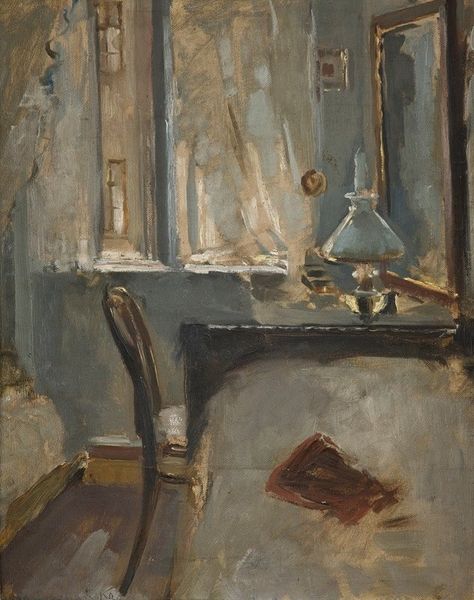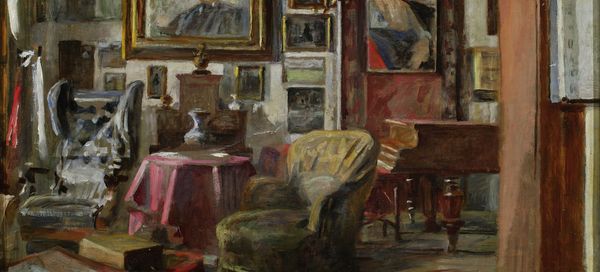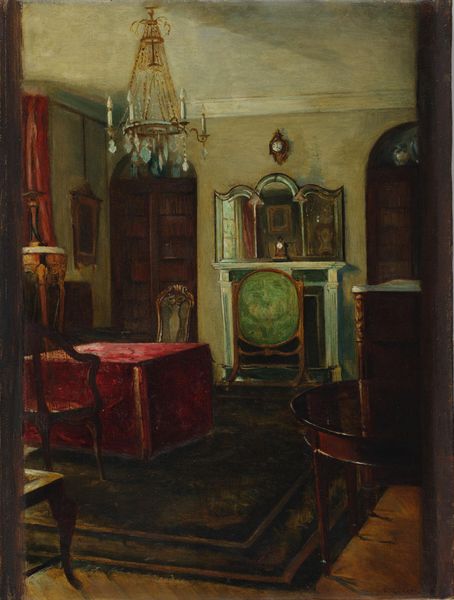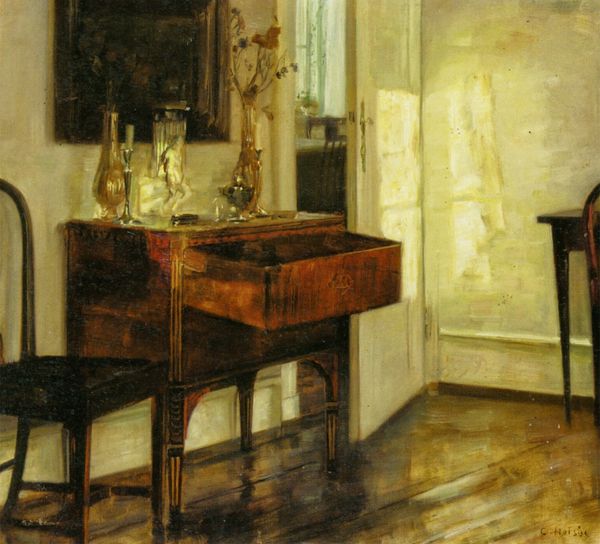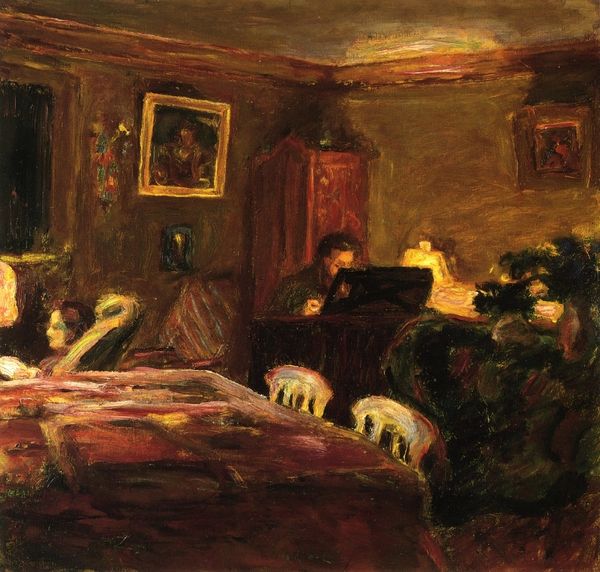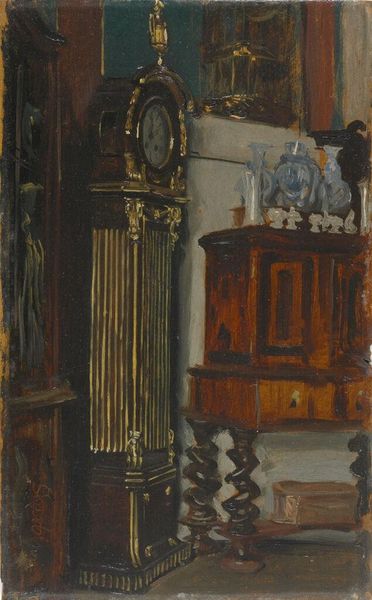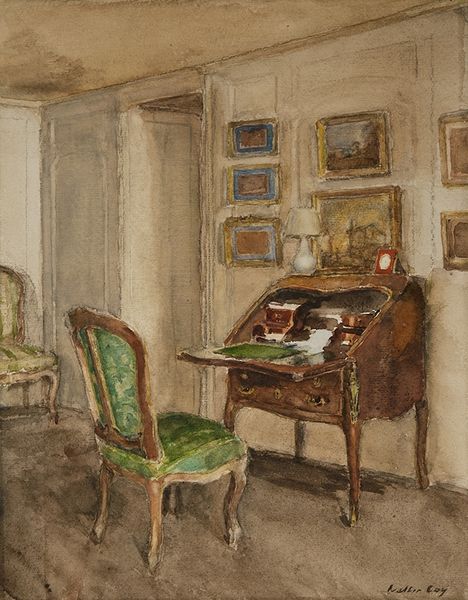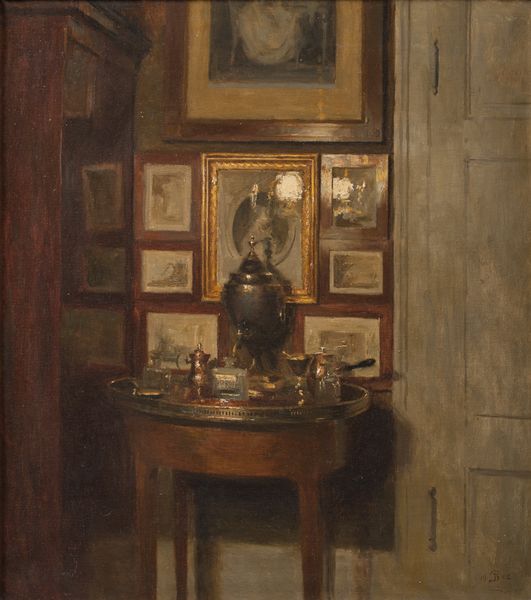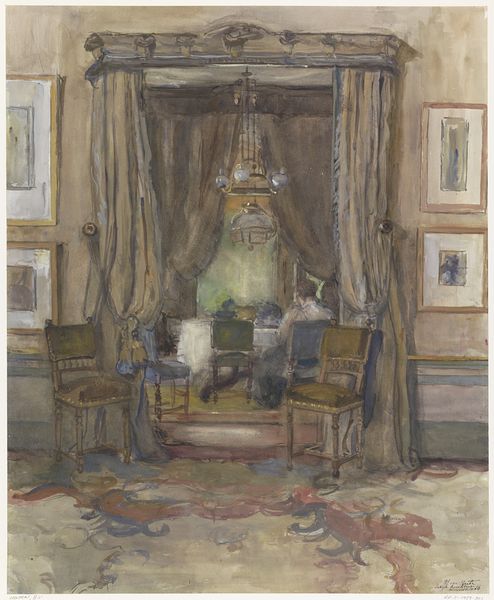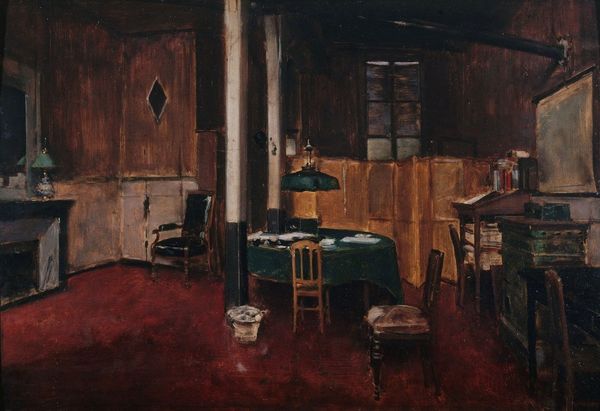
painting, watercolor
#
painting
#
impressionism
#
oil painting
#
watercolor
#
genre-painting
#
watercolor
Copyright: Public Domain: Artvee
Curator: Before us, we have "View Of An Interior With A Louis Xv Commode" by Giovanni Boldini, realized in oil and watercolor. It offers an intimate glimpse into a domestic scene. Editor: My first impression? It’s quite shadowy and evocative. The blurred details give it a sense of fleeting time, like a half-remembered dream. I almost feel like an intruder, peering into a private moment. Curator: It’s an interesting consideration. Boldini was a master of capturing the Belle Époque. His depictions of interiors, like this one, often reflected the social status of the inhabitants. A Louis XV commode indicates a certain level of affluence. Editor: Absolutely, and it invites us to consider how wealth is displayed and performed within private spaces. But what story is being told here? The seemingly casually strewn objects—books, perhaps a cloak—suggest someone lives here, but where are they? Is it the mistress? Curator: The absence of figures is, I believe, a deliberate choice by Boldini. The room itself becomes a portrait, echoing the personalities and tastes of its owner. He likely captured these types of items to emphasize a specific sort of sophistication that would've been popular at the time, showcasing what a life of luxury truly looked like. Editor: Luxury, yes, but also constraints. That ornate commode isn’t just a piece of furniture; it's a symbol of societal expectations, particularly for women. Beautiful yet potentially trapping, reflecting expectations of beauty, leisure, and perhaps, stifled agency. The shadowy tones contribute to the atmosphere. It all speaks to how art has depicted gender roles. Curator: True. The contrast between the vibrant reds and deep shadows certainly lends a psychological depth to the painting. The style and interior decorations were often meant to influence or indicate things about an individual that words could not. Editor: And thinking about this artist's work being consumed today by contemporary viewers...it's really interesting how, perhaps, the meaning continues to be debated and evolves with social norms. The idea that this type of art acts almost as a cultural relic through its ability to preserve visual documentation of society from another time. Curator: Precisely. It underscores the crucial point of keeping discussions open in the cultural world to understand artwork through multiple perspectives, allowing a wider demographic to enjoy. Editor: A valuable endeavor, reminding us that art should prompt questioning to progress as an activist as much as it offers insight into societal contexts and our historical roots.
Comments
No comments
Be the first to comment and join the conversation on the ultimate creative platform.
